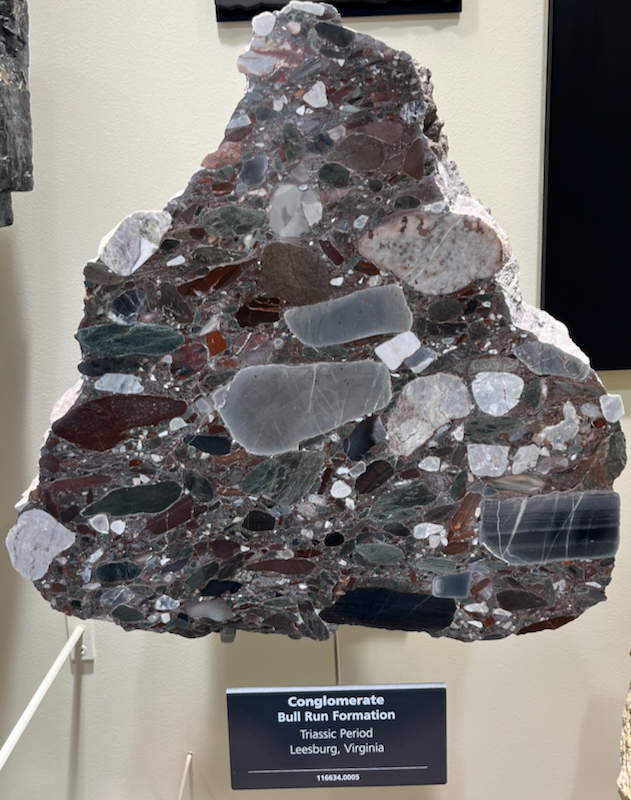Conglomerate
When the Earth takes extremely tiny rocks called sand and squeezes them together, you get a kind of rock called sandstone. When the Earth takes broken up small rocks and naturally cements them together, you get a kind of rock called breccia. And when the Earth takes naturally rounded small rocks and naturally cements them together, you get a kind of rock called conglomerate. You may have heard that the Appalachian Mountains, near the East Coast of the United States, were once thousands of feet taller, maybe even as tall as Mount Everest. So what made them so short? Over millions of years, the scraping of glaciers, as they flowed from north to south then retreated to the north, and the flows of streams and rivers wore down the mountains, foot by foot. As they did so, all the rocks they broke off rubbed together and tumbled over each other until they also wore down, from pointy chunks to rounded rocks. As you can imagine, thousands of feet of mountain adds up to a lot of rounded rocks! Near Boston, Massachusetts, there’s a deposit of these rocks that is said to be three miles thick! Once these rounded rocks start piling up in thick layers, often along the ocean where the rivers end, minerals and small sediments fill in the spaces between the rocks and eventually harden, becoming like natural cement. Eventually, that forms a sedimentary rock called conglomerate. Some people thought conglomerate looked like the dessert British people call a “pudding” (which can have pieces of dried fruit in it), so they gave it the nickname “puddingstone.”
| Formula | Group or Type | Shape | Hardness | Specific Gravity | Streak | Luster |
|---|---|---|---|---|---|---|
| — | — | — | — | — | —– | — |

